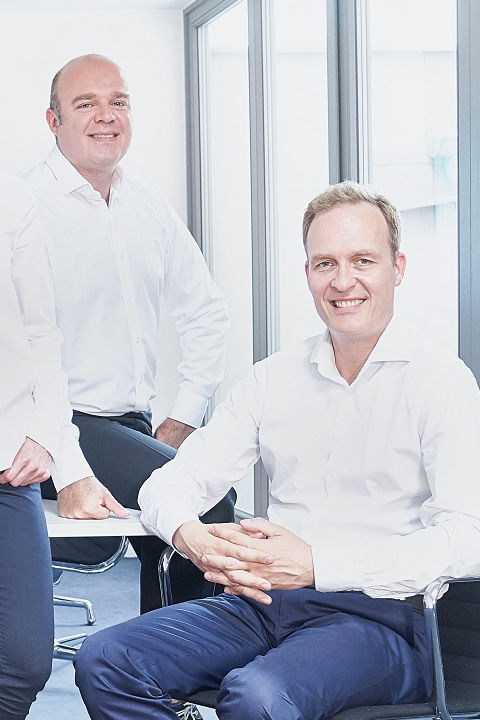Quick Wins and where to find them - faster digital transformation in traditional german banks
German banks and credit institutions under pressure
The entire landscape of traditional German banks and credit institutions is under pressure. This is caused partly by the overall difficult economic condition in Germany, even though banks were able to benefit greatly from high interest rates last year. The growing pressure from competition and innovation, for example from FinTech’s or international banks, is particularly important and has been relevant for some time. Both are known for being more innovative and faster in coping with digital transformation – in the case of FinTech’s even in shaping it. The challenges are so great that especially representatives from the FinTech world are already somewhat provocatively assuming that many German banks will no longer exist in 2030. Important areas of activity for the transformation are, for example:
- Product and service innovation
- User Experience
- Sales ecosystems and partnerships
- Operational efficiency and cost reductions
- Attractiveness on the labor market
Acceleration of the transformation through Quick Wins
Sometimes massive endeavors are required to overcome these challenges. It is often necessary to replace outdated core IT systems that do not enable integrated processes and consistent data management and are too monolithic for incremental and modular expansions (as required by modern financial service ecosystems, for example). Such projects can take years, go far beyond technical implementation and require eight- to nine-figure budgets.
The problem with these sweeping approaches: While they are necessary and promise to have a strong impact on the executing bank’s competitiveness, they do not take effect for a few years. Normally they do not offer any short-term improvements, for example for more convincing customer experiences, smarter operations and working methods or attractiveness on the labor market – and therefore on the income statement for this or the following year.
But this problem can be tackled and solved. Precisely because German banks have been so traditional and reluctant to innovate in the past, they have great potential for quick wins that enable rapid success – i.e. successes that take effect within a period of 3 – 12 months. The impact of quick wins in digital transformation are extremely broad and often strategic in nature, meaning they are already aimed at substantial optimizations – much more than the term “quick win” might suggest from time to time. At the same time, they have the advantage that their rapid effectiveness makes the digital transformation visible, especially the successes and potential that the individual transformation strategy of the respective company has in mind. Quick wins therefore also have a positive knock-on effect on transformation strategies whose implementation and internal degree of change is particularly long, intensive and sometimes painful.
Below, we explain 5 exemplary fields of action in which quick wins can be found:
- Transformation Mindset
- Cross Silo Collaboration
- Operational efficiency, standardization and scalability
- Artificial intelligence (AI)
- Customer centricity
Transformation Mindset
One of the most important hurdles to digital transformation is the mental readiness of the internal team to embrace or even shape innovation. Due to fears about the uncertainty of personal impacts from the change, doubts about one’s own adaptability, and concerns about the failure of collective efforts, the digital transformation is being questioned. Is the change necessary? Has one listened carefully enough, both to customers and internal teams? Is the chosen strategic direction the right one? Does the implementation take sufficient account of the organization’s existing capabilities and is it therefore feasible? All board members, managing directors and top managers who deal with transformation in German banks are familiar with these questions. Especially in German banks little has changed operationally for decades.
Why does the Quick Win mindset challenge have potential? Because mindsets are primarily a result of internal communication and participation. Changing communication is not easy in principle because it is the result of substantial mindsets and attitudes – but changing mindsets is above all a qualitative process that can be carried out quickly without complex follow-ups to the implementation. Changing mindsets is therefore not very time-consuming. The same applies to participation: it is primarily a question of willingness, rather than long-term implementation.
Cross-Silo Collaboration
One particularly difficult part of digital transformation is the cross-silo challenge: transformation strategies are generally complex and require the intensively interwoven collaboration of various business, specialist and IT teams. However, the existing operational model of most companies is not prepared for this collaboration, the “cross silo collaboration”, for example at the levels of target synchronization, budget coordination, resource allocation or implementation management. Here, too, a very special area of tension can be found in German banks: Collaboration between the sales teams on the one side and all more process-oriented teams on the other, such as Risk Management, Treasury or Loan Management. All process-oriented teams are increasingly striving for integrated processes and data management in order to reduce their process costs and increase data quality. These changes also require sales teams to adapt to these new processes and take themselves the time for these changes and the corresponding learning curves. However, sales teams that define themselves by being constantly in the wind and the ability to communicate with customers, usually think less about processes. Their attention is usually always focused on achieving more time with the customer and more sales success. Of course, better processes can support exactly that – but this requires a sufficiently clear concept for “cross silo collaboration”.
Here Quick wins are already at the mediating level, for example through offsites that bring the teams together, establish the value of the new solutions for everyone involved and jointly examine which further improvement steps are imaginable.
Operational efficiency, standardization and scalability
Of course, a bank’s operational efficiency is strongly driven by the level of integration of the tools and IT systems that support operations and enable the necessary data management. Nevertheless, there is great Quick Win potential in the field of operational efficiency, which is often independent of the technical optimization of systems. Since, the less integrated IT systems are – and the greater the need for long-term technical realignments – the more fragmented and extensive the existing tool and system landscape, and consequently the process environment, often becomes. This usually leads to very heterogeneously established process and system knowledge – fodder for the efficiency killer “tribal knowledge”. Here Quick-win potential can be found in the subsequent documentation, training and guaranteed establishment of the systemic and procedural status quo. Even without new processes and systems, a lot can be gained by simply making better and more consistent use of existing solutions. This approach also promises additional impact because a granular, uniform understanding of processes allows pain points and optimization approaches to be identified much more quickly. And where processes are standardized, they can also be managed and scaled much better. More standardization also means significantly faster onboarding of new team members and therefore less dependence on the current team or established team tandems, as found often between Sales and Risk Management.
Artificial Intelligence (AI)
No terrain of digital transformation and disruption is currently as magical and exciting as the terrain of artificial intelligence. But there are also great quick-win opportunities here – in fact everywhere where no complex AI integrations into existing rules, logics and IT systems is necessary, but where existing (semi-)standardized AI solutions can be used. These existing AI solutions cannot create the holistic value of deeply integrated solutions, but they can help make activities smarter, more automated and cost-reduced, and do this quickly. Areas of application can be in normal but frequent activities such as composing emails or memos or developing Excel spreadsheets. AI-driven quick wins are also conceivable in banking-specific areas, for example in customer service chatbots, fraud detection, credit scoring or in regulatory and compliance.
Customer Centricity
In times of increasingly rapid change, few skills are as important as understanding your own customers and target groups. Digitalization, new competition and innovations from outside the industry are also shaping and changing customer expectations in private and commercial banking. And to successfully orientate digital transformation, it is not what you could do from a technological perspective that counts – but only what serves customer expectations and creates value for customers. The future of customer centricity will be data-based, personalized, automated and AI-driven. But there is still a long way to go. Nevertheless, there are short-term – yet significant – opportunities to further develop your own ability to think and act in a customer-centric way. These can be, for example, the collection and evaluation of all knowledge about the customer that is held by the bank’s existing sales, marketing and service teams: What do customers complain about most? Where can customer expectations not be met as desired? What questions or ideas are expressed by customers? It is important to aggregate and analyze these findings across the company. In many organizations, this activity continues to take place in several departments at the same time, so that the sales team, for example, has a different view of the requirements than the team that manages websites and apps. Many of the results of this analysis can be implemented in the short term, within a period of 12 months. All others will enrich the requirement catalogs of the long-term transformation initiatives.
Learn more about eStrategy Consulting
We are proud of our satisfied customers, our extensive project portfolio and our rehearsed team.




